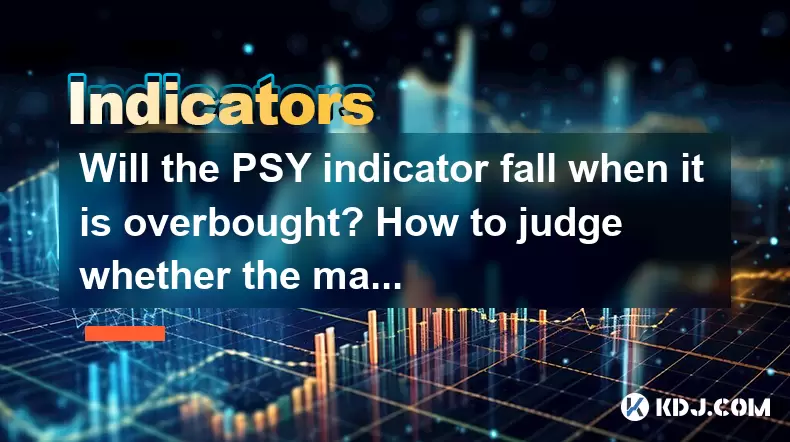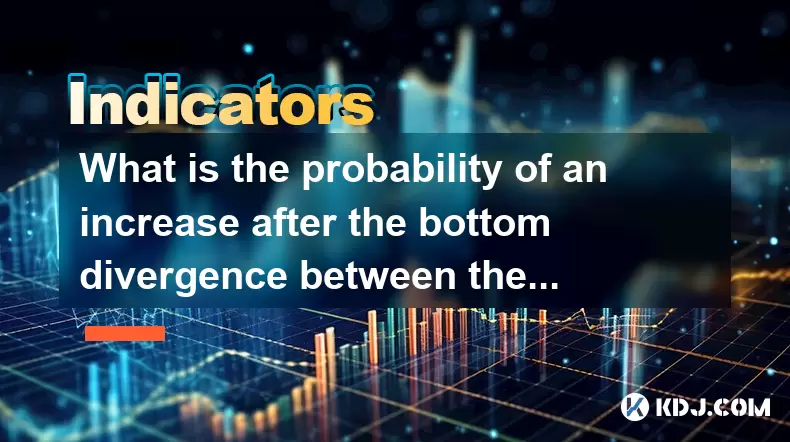-
 Bitcoin
Bitcoin $115100
-2.99% -
 Ethereum
Ethereum $3642
-1.38% -
 XRP
XRP $3.027
-5.51% -
 Tether USDt
Tether USDt $1.000
-0.05% -
 BNB
BNB $763.4
-1.32% -
 Solana
Solana $177.2
-5.42% -
 USDC
USDC $0.9999
-0.02% -
 Dogecoin
Dogecoin $0.2247
-6.47% -
 TRON
TRON $0.3135
0.23% -
 Cardano
Cardano $0.7824
-4.46% -
 Hyperliquid
Hyperliquid $42.53
-0.97% -
 Stellar
Stellar $0.4096
-6.09% -
 Sui
Sui $3.662
-2.61% -
 Chainlink
Chainlink $17.63
-3.57% -
 Bitcoin Cash
Bitcoin Cash $536.3
2.94% -
 Hedera
Hedera $0.2450
0.34% -
 Avalanche
Avalanche $23.23
-3.15% -
 Litecoin
Litecoin $112.2
-1.23% -
 UNUS SED LEO
UNUS SED LEO $8.976
-0.30% -
 Shiba Inu
Shiba Inu $0.00001341
-2.72% -
 Toncoin
Toncoin $3.101
-2.44% -
 Ethena USDe
Ethena USDe $1.001
-0.05% -
 Uniswap
Uniswap $10.08
-1.97% -
 Polkadot
Polkadot $3.938
-2.77% -
 Monero
Monero $323.9
0.87% -
 Dai
Dai $0.9999
-0.02% -
 Bitget Token
Bitget Token $4.481
-1.69% -
 Pepe
Pepe $0.00001199
-5.94% -
 Aave
Aave $288.2
-0.68% -
 Cronos
Cronos $0.1279
0.36%
Will the PSY indicator fall when it is overbought? How to judge whether the market sentiment is overheated?
The PSY indicator, used to gauge market sentiment in crypto, may not fall immediately when overbought; it depends on shifts in market dynamics and sentiment.
Jun 08, 2025 at 11:00 am

The Psychological Line (PSY) indicator is a popular tool used by traders in the cryptocurrency market to gauge market sentiment and potential trend reversals. When discussing whether the PSY indicator will fall when it is overbought, it is important to understand the mechanics of the indicator and how it reflects market sentiment. This article will delve into these aspects and provide a comprehensive guide on how to judge whether the market sentiment is overheated using the PSY indicator.
Understanding the PSY Indicator
The PSY indicator, also known as the Psychological Line, measures the percentage of days over a specified period that a cryptocurrency closes higher than the previous day's close. The formula for calculating the PSY is as follows:
[ \text{PSY} = \left( \frac{\text{Number of days the price closed higher than the previous day}}{\text{Total number of days}} \right) \times 100 ]
Typically, the PSY is calculated over a 12-day period, but this can be adjusted based on the trader's preference. A high PSY value indicates that a large percentage of days have closed higher, suggesting bullish sentiment, while a low PSY value indicates bearish sentiment.
PSY and Overbought Conditions
An overbought condition occurs when the market has experienced a prolonged period of upward movement, leading to a potential exhaustion of buying power. In the context of the PSY indicator, a reading above 75% is generally considered overbought. When the PSY reaches such high levels, it suggests that the market sentiment is extremely bullish, and a reversal might be imminent.
However, the PSY indicator falling when it is overbought is not guaranteed. The PSY indicator can remain in overbought territory for an extended period if the bullish momentum continues. It is only when the market sentiment shifts that the PSY will start to decline. This shift can be triggered by various factors, such as negative news, profit-taking, or a change in market dynamics.
How to Judge Market Sentiment Using PSY
To effectively use the PSY indicator to judge whether the market sentiment is overheated, traders should follow these steps:
- Monitor the PSY Value: Keep a close eye on the PSY value over time. If the PSY consistently remains above 75%, it is a strong indication of an overbought market.
- Compare with Historical Data: Compare the current PSY value with historical data to understand how the market has reacted in similar situations in the past. This can provide insights into potential future movements.
- Combine with Other Indicators: Use the PSY in conjunction with other technical indicators, such as the Relative Strength Index (RSI) or Moving Averages, to confirm the overbought condition. If multiple indicators suggest an overbought market, the likelihood of a reversal increases.
- Analyze Market News and Events: Stay informed about market news and events that could influence sentiment. Negative news can quickly shift the market from overbought to oversold conditions.
Using PSY to Make Trading Decisions
When the PSY indicates an overbought market, traders can consider the following strategies:
- Take Profits: If you have open positions, consider taking profits as the market might be due for a correction.
- Short Selling: Some traders might opt to short sell, anticipating a downward correction in the market.
- Wait for Confirmation: Before making any trading decisions, wait for confirmation from other indicators or a clear shift in market sentiment.
PSY and Cryptocurrency Market Dynamics
The cryptocurrency market is known for its volatility and rapid sentiment shifts. The PSY indicator can be particularly useful in such an environment as it provides a quick snapshot of market sentiment. However, traders should be aware that the PSY can be influenced by short-term fluctuations and may not always accurately predict long-term trends.
For instance, during a strong bullish trend in the cryptocurrency market, the PSY might remain in overbought territory for weeks or even months. This does not necessarily mean that the market will immediately reverse. Instead, traders should use the PSY as one part of a broader analysis that includes other technical indicators and fundamental analysis.
Practical Example of Using PSY
Let's consider a practical example of how to use the PSY indicator to judge market sentiment in the cryptocurrency market:
- Step 1: Calculate the PSY: Assume we are using a 12-day period. Over the last 12 days, the cryptocurrency closed higher than the previous day's close on 10 days. The PSY would be calculated as:
[ \text{PSY} = \left( \frac{10}{12} \right) \times 100 = 83.33\% ]
- Step 2: Interpret the PSY Value: A PSY value of 83.33% indicates an overbought market. This suggests that the market sentiment is extremely bullish.
- Step 3: Confirm with Other Indicators: Check the RSI, which might also be in overbought territory (typically above 70). If the RSI confirms the overbought condition, it strengthens the case for a potential reversal.
- Step 4: Monitor Market News: Keep an eye on any news that could affect the cryptocurrency's price. For example, if there is negative news about regulatory crackdowns, it could trigger a sentiment shift.
- Step 5: Make a Trading Decision: Based on the overbought condition and other indicators, decide whether to take profits, short sell, or wait for further confirmation.
Frequently Asked Questions
Q1: Can the PSY indicator be used for all cryptocurrencies?
A1: Yes, the PSY indicator can be used for all cryptocurrencies. However, the effectiveness of the indicator may vary depending on the liquidity and volatility of the specific cryptocurrency. More liquid cryptocurrencies with higher trading volumes tend to provide more reliable PSY readings.
Q2: How often should the PSY indicator be recalculated?
A2: The PSY indicator should be recalculated daily to reflect the most current market sentiment. However, for longer-term analysis, traders might choose to use weekly or monthly PSY values to get a broader view of market trends.
Q3: Is the PSY indicator suitable for beginners?
A3: The PSY indicator can be suitable for beginners as it is relatively simple to calculate and interpret. However, beginners should combine the PSY with other indicators and seek guidance from more experienced traders to avoid misinterpreting market signals.
Q4: Can the PSY indicator be used in conjunction with fundamental analysis?
A4: Yes, the PSY indicator can be used in conjunction with fundamental analysis. While the PSY provides insights into market sentiment based on price movements, fundamental analysis can offer a deeper understanding of the cryptocurrency's underlying value and potential for growth. Combining both can provide a more comprehensive view of the market.
Disclaimer:info@kdj.com
The information provided is not trading advice. kdj.com does not assume any responsibility for any investments made based on the information provided in this article. Cryptocurrencies are highly volatile and it is highly recommended that you invest with caution after thorough research!
If you believe that the content used on this website infringes your copyright, please contact us immediately (info@kdj.com) and we will delete it promptly.
- Solana, Altcoins, and Coinbase: What's the Buzz?
- 2025-07-26 06:30:12
- Ethereum, Pepeto Presale, and Market Appetite: What's the Buzz?
- 2025-07-26 06:50:12
- TOKEN6900: The Next Big Meme Coin? Presale Heats Up!
- 2025-07-26 05:30:35
- ONDO Breakout Assessment: Whales, Wallets, and What's Next?
- 2025-07-26 05:30:35
- Kaspa's Strongest Month REVEALED: New Data Shocks KAS Traders!
- 2025-07-26 04:30:12
- Cross-Border Payments Revolution: Stablecoins and Payment Providers Leading the Charge
- 2025-07-26 04:50:12
Related knowledge

What does it mean when the price breaks through the 60-day moving average with a large volume but shrinks the next day?
Jul 26,2025 at 06:01am
Understanding the 60-Day Moving Average in Cryptocurrency TradingThe 60-day moving average (60DMA) is a widely used technical indicator in the cryptoc...

What does the golden cross of EMA12 and EMA26 but the low trading volume reflect?
Jul 26,2025 at 06:44am
Understanding the Golden Cross in EMA12 and EMA26The golden cross is a widely recognized technical indicator in the cryptocurrency market, signaling a...

What does it mean when the price breaks through the 30-day moving average and is accompanied by a large volume?
Jul 26,2025 at 03:35am
Understanding the 30-Day Moving Average in Cryptocurrency TradingThe 30-day moving average (MA) is a widely used technical indicator in the cryptocurr...

What does it mean when the MACD bar turns from negative to positive?
Jul 26,2025 at 05:01am
Understanding the MACD Indicator in Cryptocurrency TradingThe Moving Average Convergence Divergence (MACD) is a widely used technical analysis tool in...

Does the golden cross of the KDJ three lines at the annual line level indicate a turning point in the big cycle?
Jul 26,2025 at 01:35am
Understanding the KDJ Indicator in Cryptocurrency TradingThe KDJ indicator is a momentum oscillator widely used in technical analysis, especially with...

What is the probability of an increase after the bottom divergence between the KDJ indicator and the trading volume?
Jul 26,2025 at 01:29am
Understanding KDJ Indicator and Its Role in Technical AnalysisThe KDJ indicator is a momentum oscillator widely used in cryptocurrency trading to iden...

What does it mean when the price breaks through the 60-day moving average with a large volume but shrinks the next day?
Jul 26,2025 at 06:01am
Understanding the 60-Day Moving Average in Cryptocurrency TradingThe 60-day moving average (60DMA) is a widely used technical indicator in the cryptoc...

What does the golden cross of EMA12 and EMA26 but the low trading volume reflect?
Jul 26,2025 at 06:44am
Understanding the Golden Cross in EMA12 and EMA26The golden cross is a widely recognized technical indicator in the cryptocurrency market, signaling a...

What does it mean when the price breaks through the 30-day moving average and is accompanied by a large volume?
Jul 26,2025 at 03:35am
Understanding the 30-Day Moving Average in Cryptocurrency TradingThe 30-day moving average (MA) is a widely used technical indicator in the cryptocurr...

What does it mean when the MACD bar turns from negative to positive?
Jul 26,2025 at 05:01am
Understanding the MACD Indicator in Cryptocurrency TradingThe Moving Average Convergence Divergence (MACD) is a widely used technical analysis tool in...

Does the golden cross of the KDJ three lines at the annual line level indicate a turning point in the big cycle?
Jul 26,2025 at 01:35am
Understanding the KDJ Indicator in Cryptocurrency TradingThe KDJ indicator is a momentum oscillator widely used in technical analysis, especially with...

What is the probability of an increase after the bottom divergence between the KDJ indicator and the trading volume?
Jul 26,2025 at 01:29am
Understanding KDJ Indicator and Its Role in Technical AnalysisThe KDJ indicator is a momentum oscillator widely used in cryptocurrency trading to iden...
See all articles

























































































